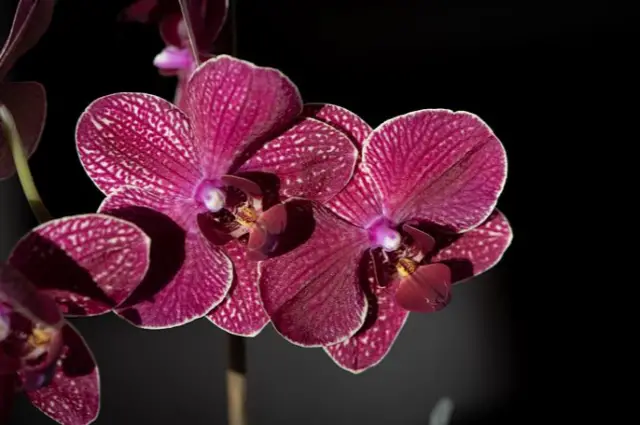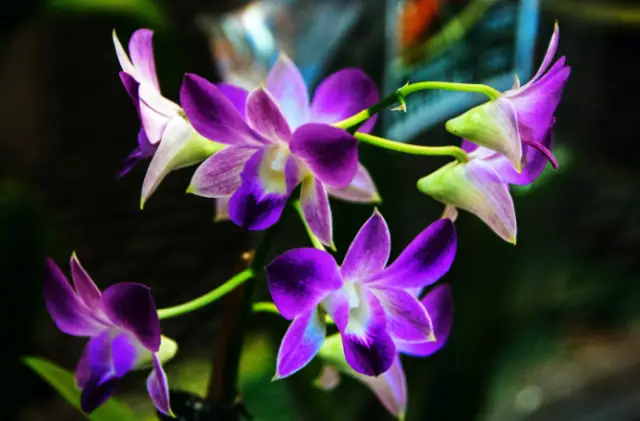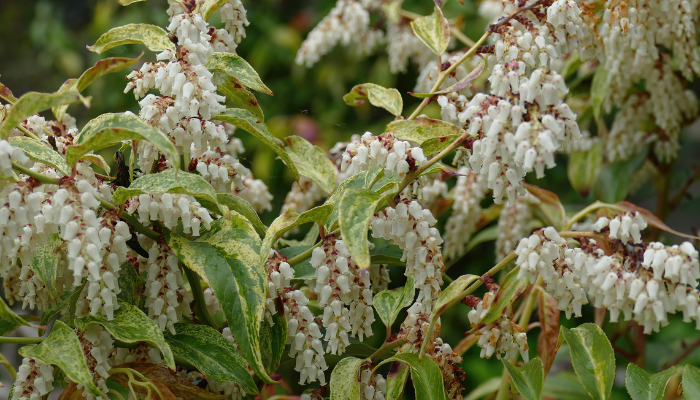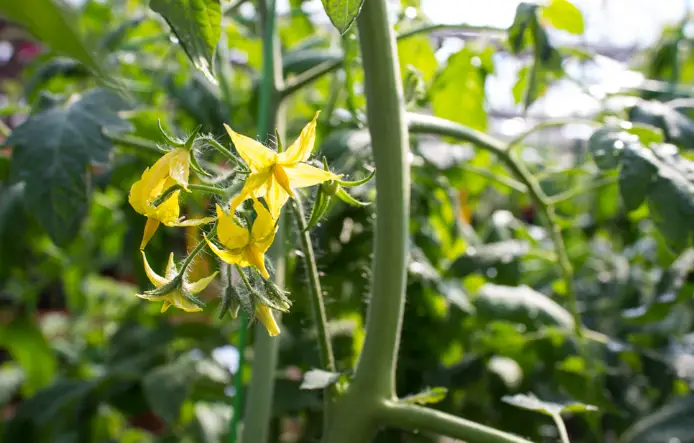Orchid SOS: Troubleshooting Common Plant Issues
Orchids are exquisite flowers that bloom in cycles. Even if the flowers have fallen off, that doesn’t mean the orchid is dead; it’s likely just in a dormant phase and will likely flower again. Let’s explore steps to encourage blooming and ensure your orchid thrives:

Method 1: Encouraging an Orchid to Bloom
- Trim the Stalk After Blooming:
- When the flowers fall off, use sharp, sterilized pruning shears or a razor to trim the stalk. Leave about 1 inch (2.5 cm) of the stalk (or spike) so it can regrow.
- Tip: Cut the stalk 1/4 inch (0.64 cm) above a node (or bump) on the stem to encourage faster re-flowering.
- Repot the orchid:
- Once the roots start poking out of the bottom of the pot, it’s time to repot.
- Gently tug the plant out of its current pot, loosen the roots, and dust off any growing media stuck to them.
- Place the orchid into a new pot (preferably designed for orchids) with lots of drainage holes. Use a saucer underneath to catch any excess water.
- Tip: Choose a pot that’s snug enough for the roots but not too small.
- Add Fresh Growing Medium:
- Mix 2 parts orchid bark (formulated specifically for orchids) with 1 part peat moss to create the growing medium.
- Fill the space around the roots with this medium, ensuring it doesn’t cover the leaves.
- Orchids thrive in well-draining media with air pockets.
Method 2: Providing Ideal Growing Conditions

- Monitor Watering:
- Overwatering is a common issue. If you notice mushy roots, water less frequently.
- Lift the orchid out of its pot and check the roots. Soggy roots or rotting leaves indicate excess water.
- Fertilize Properly:
- Use a balanced liquid fertilizer (such as 10-10-10 or 20-20-20) to provide equal amounts of nitrogen, phosphorus, and potassium.
- Mix the fertilizer to quarter-strength and apply it directly to the potting medium.
Method 3: Orchid Care Tips
- Choose the right orchid variety:
- There are various orchid species, each with its own unique care requirements. Some popular varieties include Phalaenopsis (moth orchids), Cattleya, Dendrobium, and Oncidium.
- Research the specific needs of your orchid type to provide tailored care.
- Temperature and humidity:
- Orchids thrive in warm and humid conditions.
- Maintain a temperature range of 65–80°F (18–27°C) during the day and slightly cooler at night.
- Use a humidity tray or mist the leaves regularly to increase the humidity around the plant.
- Avoid direct sunlight.
- While orchids need light, direct sunlight can scorch their leaves.
- Place them in bright, indirect light near a north- or east-facing window.
- If using grow lights, keep them 6–8 inches (15–20 cm) above the orchids.
- Repot When Necessary:
- Repot your orchid every 1–2 years or when the potting medium breaks down.
- Choose a pot with drainage holes and use an orchid-specific potting mix (bark-based or moss-based).
- Monitor root health:
- Healthy roots are crucial for orchids.
- Check the roots periodically. They should be green or silvery and firm.
- Trim any dead or rotting roots.
- Watering Techniques:
- Water your orchid when the potting mix is almost dry.
- Use lukewarm water and avoid cold water.
- Clear pots allow you to see moisture levels.
- Fertilize Strategically:
- During the active growing season (spring and summer), fertilize weekly.
- Use a balanced liquid fertilizer (10-10-10 or 20-20-20) diluted to quarter-strength.
- Stop fertilizing when the plant stops producing flowers.
- Pruning and Deadheading:
- After flowering, trim the spike to encourage new growth.
- Remove dead or yellowing leaves to maintain plant health.
- Watch for pests and diseases:
- Keep an eye out for pests like aphids, mealybugs, and scale.
- Treat any infestations promptly.
- Prevent overwatering to avoid root rot.
- Patience and observation:
- Orchids can take time to adapt and bloom.
- Observe your plant closely, adjust care as needed, and enjoy the journey.
How Do You Know If Orchids Are Getting Too Much Light?
Determining the right amount of light for your orchid is crucial for its health and well-being. Here are some signs to look out for if your orchid is receiving too much light:
- Discolored Leaves:
- Direct sunlight can burn an orchid’s leaves. Even an hour of bright sun exposure can lead to serious damage.
- If you notice white, yellow, or brown splotches on your orchid’s leaves, it may be caused by light that is too intense.
- Yellow Leaves: If your orchid’s leaves are becoming yellow and hard, intense light is likely to blame. Even if the light isn’t too bright to cause immediate sunburn, it can lead to slow damage.
- Hot to the touch:
- An easy way to tell if your orchid is getting too much sun is to feel the foliage. If it’s hot to the touch, your orchid needs more shade.
- Watch out for red or purple edges on the leaves, which indicate that they’re receiving as much sunlight as they can take.
- Pale green leaves with a yellow appearance:
- Excessive light can cause orchid leaves to turn pale green and gradually become yellow.
- This may be followed by reddish spots and browned tips.
- If you notice these signs, it’s important to move your orchid to lower light conditions before the damage becomes too severe
Common Types of Orchids
Orchids are fascinating and diverse plants with thousands of species. Here are some common types of orchids that you might encounter:
- Phalaenopsis (Moth Orchids):
- These are popular houseplants due to their ease of care and beautiful, long-lasting flowers.
- Moth orchids have elegant, arching stems with large, flat flowers in various colors, including white, pink, and purple.
- Cattleya Orchids:
- Known for their vibrant and fragrant flowers.
- Cattleyas have bold, showy blooms with ruffled petals and a lip in contrasting colors.
- Dendrobium Orchids:
- Dendrobium comes in various shapes and sizes.
- They have cane-like stems and produce clusters of flowers along the stem.
- Cymbidium Orchids:
- Cymbidiums are popular for their long-lasting, waxy flowers.
- They come in various colors, including white, yellow, pink, and green.
- Oncidium Orchids:
- Also known as “dancing lady” orchids due to their frilly lips resembling a dancing figure,.
- Oncidiums have sprays of small, colorful flowers.
- Vanda Orchids:
- Vandas have striking, flat flowers with vibrant colors.
- They are often grown in hanging baskets or mounted on tree branches.
- Miltonia orchids (pansy orchids):
- They resemble pansies and have intricate patterns on their petals.
- Miltonias are known for their delightful fragrance.
- Epidendrum Orchids:
- Epidendrums have tall, branching stems with small, colorful flowers.
- They are easy to grow and adapt well to different conditions.
10 frequently asked questions (FAQ) About Orchid Care
Q: How often should I water my orchid?
-
- A: Allow the growing medium to dry out between waterings. Stick your finger into the medium; if it feels dry up to your first knuckle, it’s time to water.
Q: What type of light do orchids need?
-
- A: Orchids need bright, indirect light. Place them near a south- or east-facing window to avoid direct sun exposure.
Q: How do I fertilize my orchid?
-
- A: Use an orchid-specific fertilizer or a balanced formula (like 20-20-20) at half strength. Administer it when the plant is actively growing.
Q: Can I repot my orchid while it’s blooming?
-
- A: It’s best to wait until the blooms fade before repotting. Choose a pot with good airflow and a well-draining medium.
Q: Why are my orchid leaves turning yellow?
-
- Yellow leaves can result from excessive light, overwatering, or poor drainage. Adjust the conditions accordingly.
Q: How do I encourage my orchid to bloom again?
-
- A: Trim the old flower spike, provide proper care, and be patient. Orchids will often rebloom with time.
Q: Are orchids toxic to pets?
-
- A: Orchids are non-toxic to dogs and cats, making them safe for pet-friendly households.
Q: What’s the ideal temperature for orchids?
-
- A: Maintain a temperature range of 65–80°F (18–27°C) during the day and slightly cooler at night.
Q: How do I identify my orchid type?
-
- A: Research the physical characteristics and flowering patterns to determine whether you have a Phalaenopsis, Cattleya, Dendrobium, or another type.
Q: What should I do if my orchid has pests?
-
- A: Keep an eye out for pests like aphids or mealybugs. Treat infestations promptly to prevent damage.








